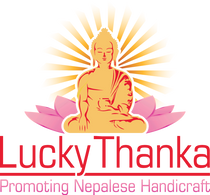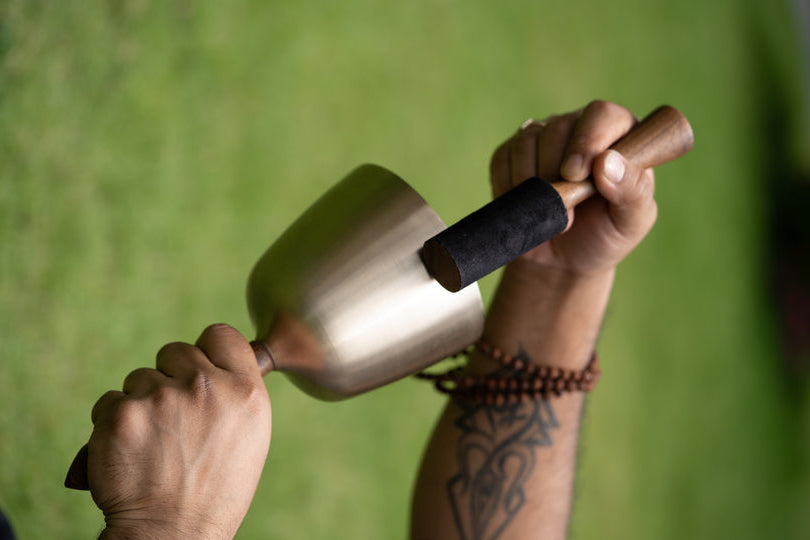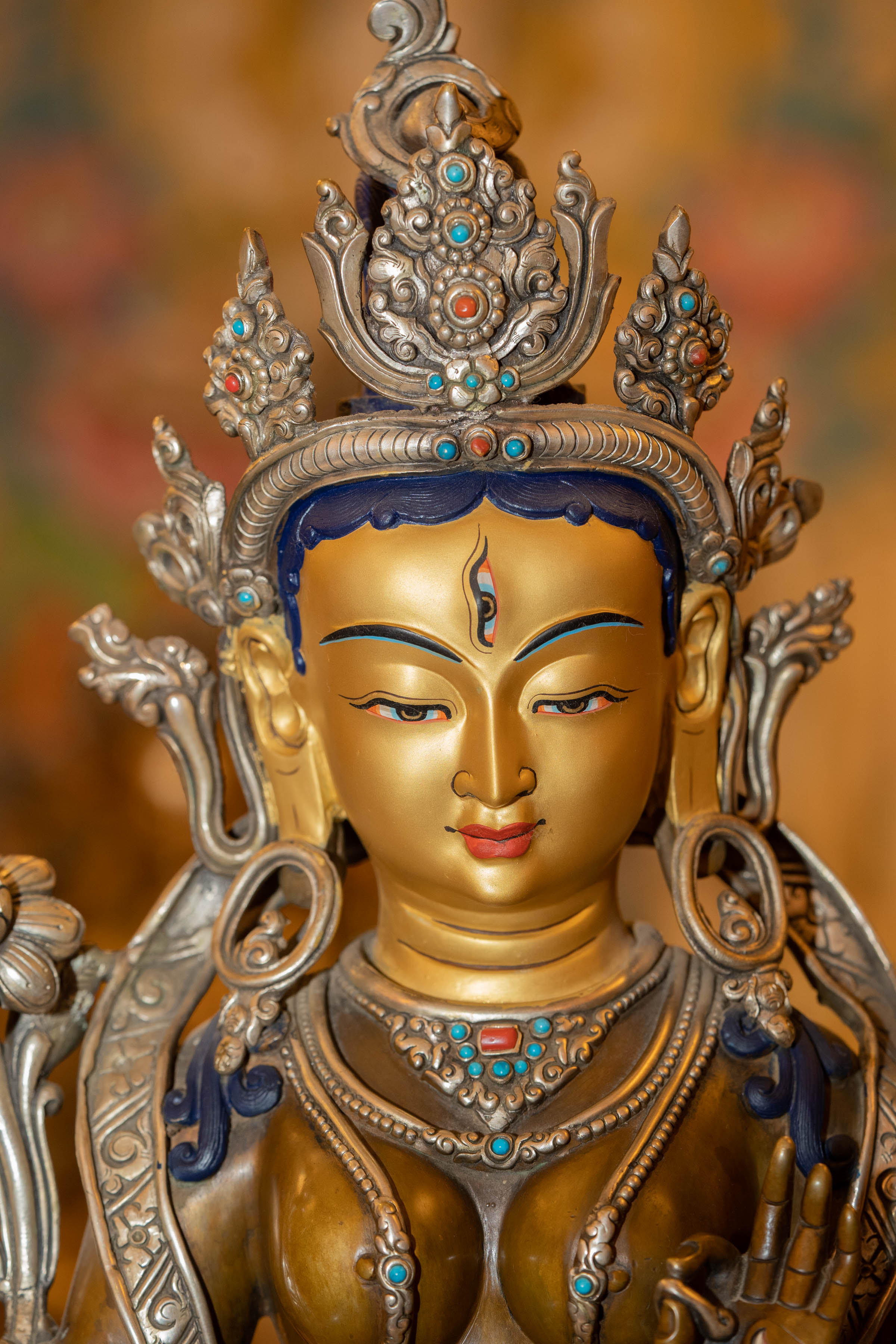Thangka paintings, with their intricate designs and rich cultural significance, have long been cherished as spiritual and artistic treasures in Tibetan and Buddhist traditions. These vibrant and meticulously crafted artworks often serve as windows into Buddhist cosmology, offering viewers a glimpse into the realms of enlightenment and divine symbolism. The question of where to hang such a precious piece is not only a matter of aesthetics but also of spiritual alignment and cultural respect. In this detailed guide, we'll explore the considerations for hanging a Thangka painting both in your home and office, delving into directional aspects and alternative deity preferences.
Whether you're seeking to adorn your living space with spiritual beauty or infuse your workplace with a sense of tranquility and inspiration, understanding the nuances of Thangka placement can deepen your appreciation for these sacred artifacts while honoring their traditional significance.
When considering where to hang Thangka paintings in your office or room, it's essential to choose spaces that promote tranquility and reflection. Thangkas, with their intricate designs and spiritual significance, can transform an environment into a sanctuary of peace and inspiration.
Hanging a Thangka Painting in Your Home
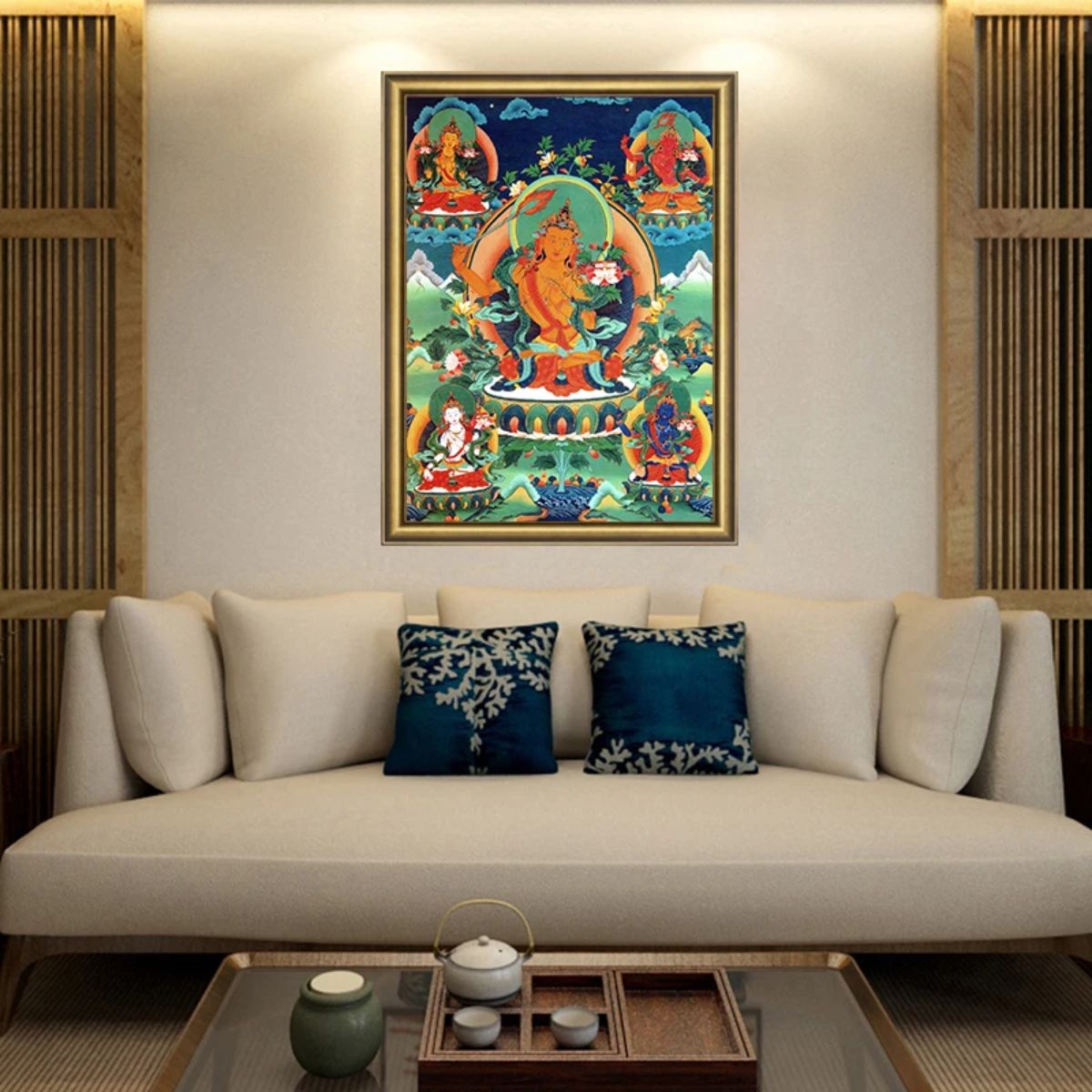
Green Tara Thangka, Chengresi Thangka, and Medicine Buddha Thangka are among the many sacred artworks that hold deep meaning in Tibetan Buddhism. Each Thangka depicts divine figures revered for their compassion, wisdom, and healing qualities. By adorning your space with these representations, you invite their benevolent energy to permeate your surroundings.
In your room, choose locations where you engage in personal contemplation or relaxation. Above your meditation space or near your bedside, Thangkas can evoke a sense of serenity and spiritual connection, guiding your thoughts towards inner peace and balance.
Selecting the Right Space:
- Choosing the ideal location for your Thangka painting in your home is crucial for maximizing its visual impact and spiritual resonance. The placement of the Thangka sets the tone for the ambiance of the space, infusing it with the essence of sacredness and contemplation. As you contemplate the placement, envision how the Thangka will harmonize with the existing decor and architectural elements of the room. Consider spaces that not only offer tranquility but also evoke a sense of reverence and serenity, allowing the Thangka to become a focal point of inspiration and reflection.
- Whether adorning the walls of a cozy living room corner, a dedicated meditation space bathed in natural light, or a study room where seekers of knowledge find solace, the chosen location should invite moments of quiet introspection and spiritual connection. By honoring the sanctity of the space and the intention behind the placement, you create an environment where the Thangka can serve as a conduit for inner transformation and spiritual growth, fostering a deeper appreciation for the timeless wisdom and beauty it embodies.
Directional Considerations:
- In Tibetan Buddhist tradition, the orientation of Thangka paintings holds profound symbolic significance. Thangkas are traditionally hung facing east, aligning with the symbolism of enlightenment and the rising sun, which represents spiritual awakening and the dawning of wisdom. However, if space limitations or room layout constraints make eastward placement impractical, alternative orientations such as north or west are acceptable.
- In these orientations, the north symbolizes stability and the path of the Bodhisattva, while the west signifies the journey towards liberation from suffering. Regardless of the direction chosen, the orientation of the Thangka serves as a visual representation of the practitioner's reverence for Buddhist teachings and their individual journey towards enlightenment. Thus, careful consideration of the Thangka's placement ensures alignment with spiritual aspirations and the broader rhythms of the universe.
Creating a Sacred Atmosphere:
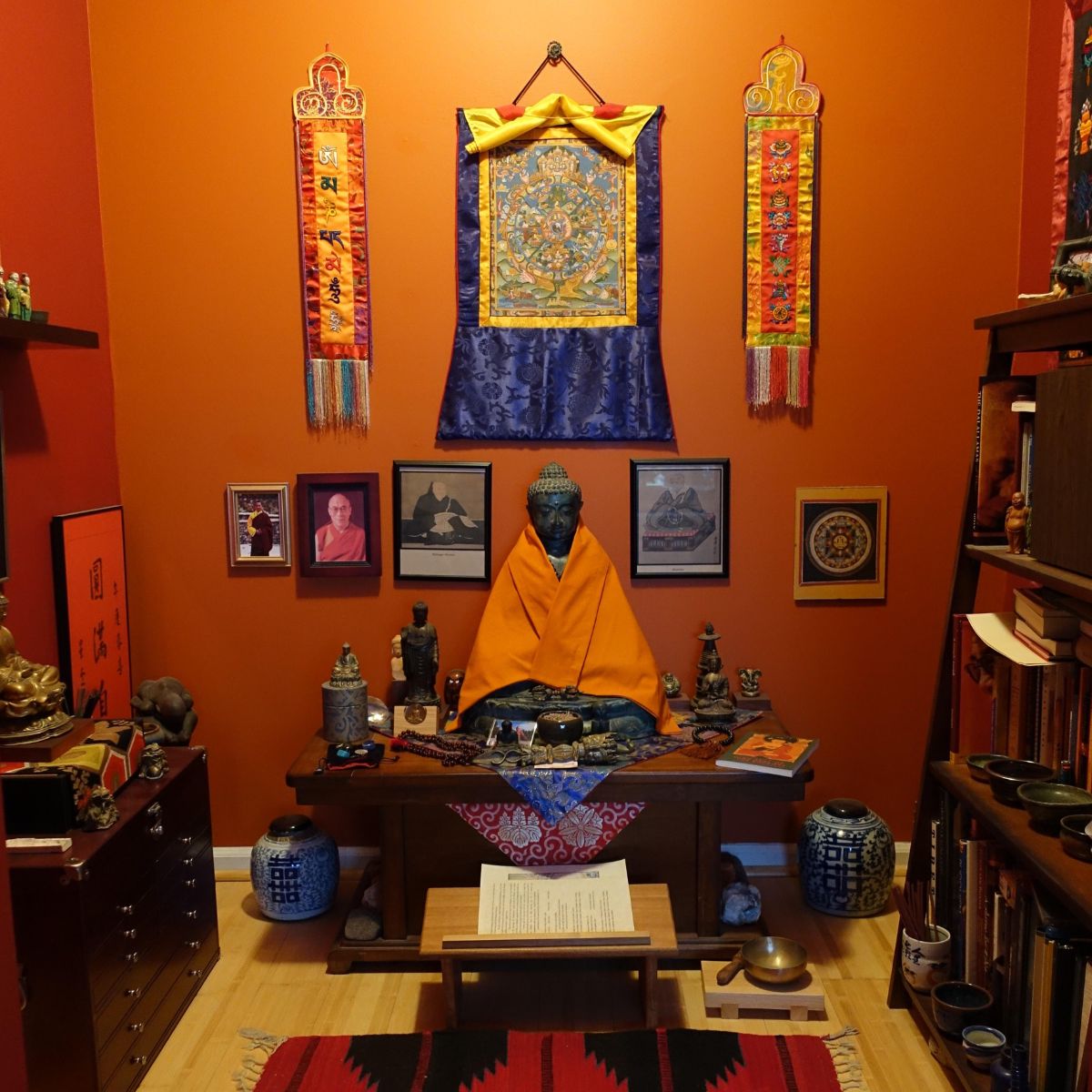
- Surrounding your Thangka painting with elements that enhance its sacredness can deepen your spiritual connection. Consider incorporating offerings such as candles, incense, or fresh flowers nearby. These offerings not only add to the visual appeal but also evoke a sense of reverence and devotion, creating an atmosphere conducive to contemplation and inner reflection.
- Additionally, creating a dedicated altar space around the Thangka can serve as a focal point for daily rituals and meditative practices, fostering a deeper connection with the divine. Installing soft lighting, such as dim lamps or string lights, can further enhance the ambiance and reverence of the area, enveloping the space in a gentle glow that invites tranquility and introspection.
Respecting Cultural Sensitivities:
- While Thangka paintings primarily depict Buddhist deities and iconography, it's essential to acknowledge and respect diverse spiritual beliefs within your household. If there are family members who adhere to different religious traditions or preferences, ensure open communication and mutual understanding regarding the significance of the Thangka painting and its placement in your home. Embracing diversity in beliefs fosters a harmonious environment where each individual feels valued and respected for their spiritual journey.
- By encouraging dialogue and honoring differing perspectives, you cultivate an atmosphere of inclusivity and acceptance, enriching the shared spiritual tapestry of your home. Recognizing the richness of cultural diversity within your household deepens your appreciation for the interconnectedness of humanity's spiritual quest and fosters a sense of unity amid individual expressions of faith.
Hanging a Thangka Painting in Your Office
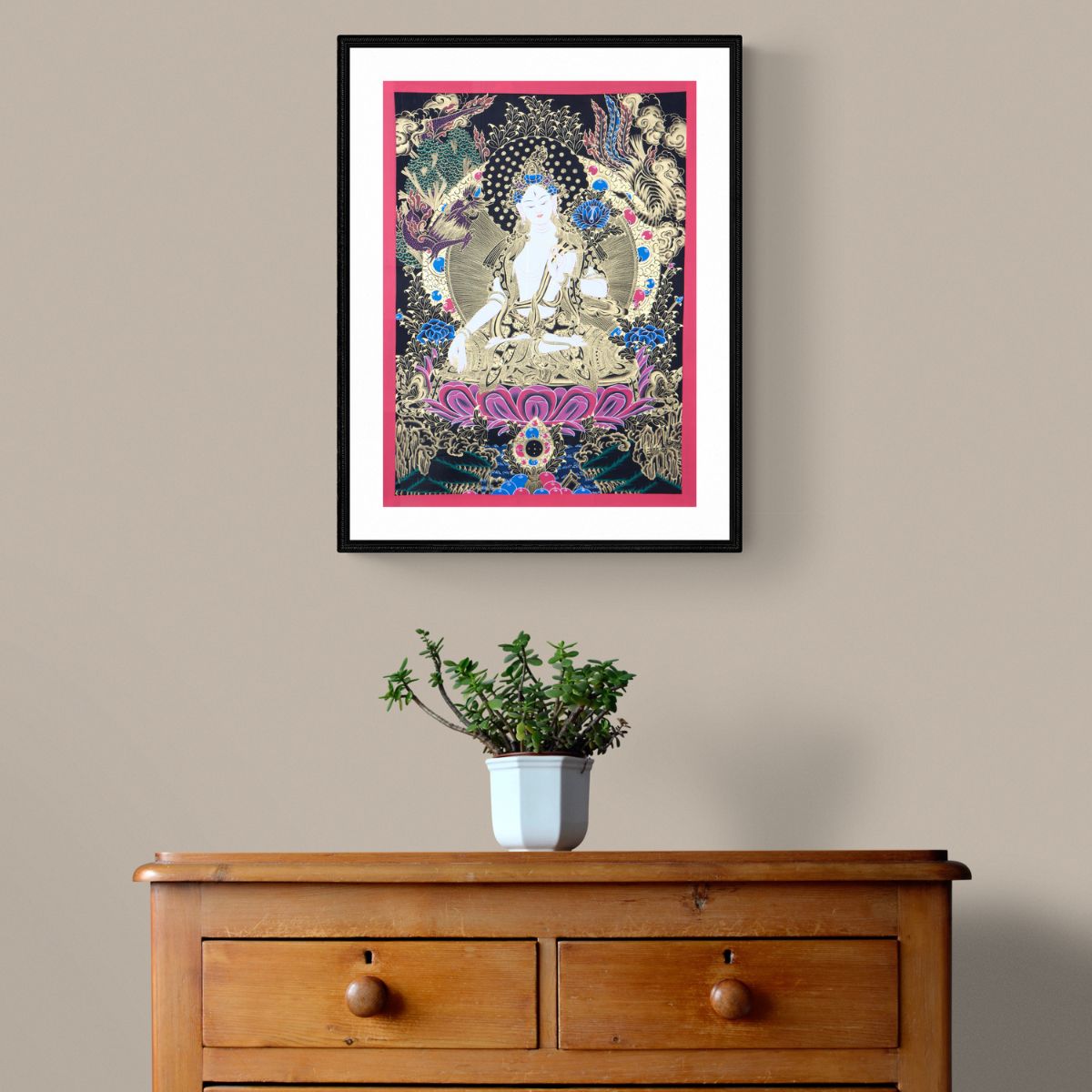
Zambala, the Tibetan god of wealth and prosperity, is a popular example of a deity whose Thangka might find a place in your office. However, it's important to note that Thangkas depicting compassionate deities, such as Green Tara and Chengresi, can also be hung for meditation purposes. Their serene presence serves as a reminder of the inherent compassion and wisdom within ourselves.
In your office, consider placing Thangkas in areas where you spend moments of reflection or decision-making. A quiet corner or above your desk can serve as a focal point for grounding and clarity amidst the demands of work.
Choosing a Professional Setting:
- Integrating a Thangka painting into your office space can infuse it with tranquility and inspiration, fostering a conducive environment for focus and creativity. Opt for areas in your office that receive natural light and are free from excessive noise or distractions, such as conference rooms, reception areas, or personal offices. The presence of a Thangka painting can serve as a visual reminder of the values of mindfulness and spiritual awareness in the workplace, encouraging employees to cultivate a sense of balance and inner peace amid the demands of professional life. Additionally, incorporating elements of traditional art and spiritual symbolism into the office environment can foster a sense of connection to broader cultural traditions, promoting a holistic approach to well-being and productivity. As employees interact with the Thangka painting throughout their workday, they may find moments of inspiration and introspection, enhancing their overall sense of fulfillment and engagement in their professional endeavors.
Promoting Mindfulness and Well-Being:
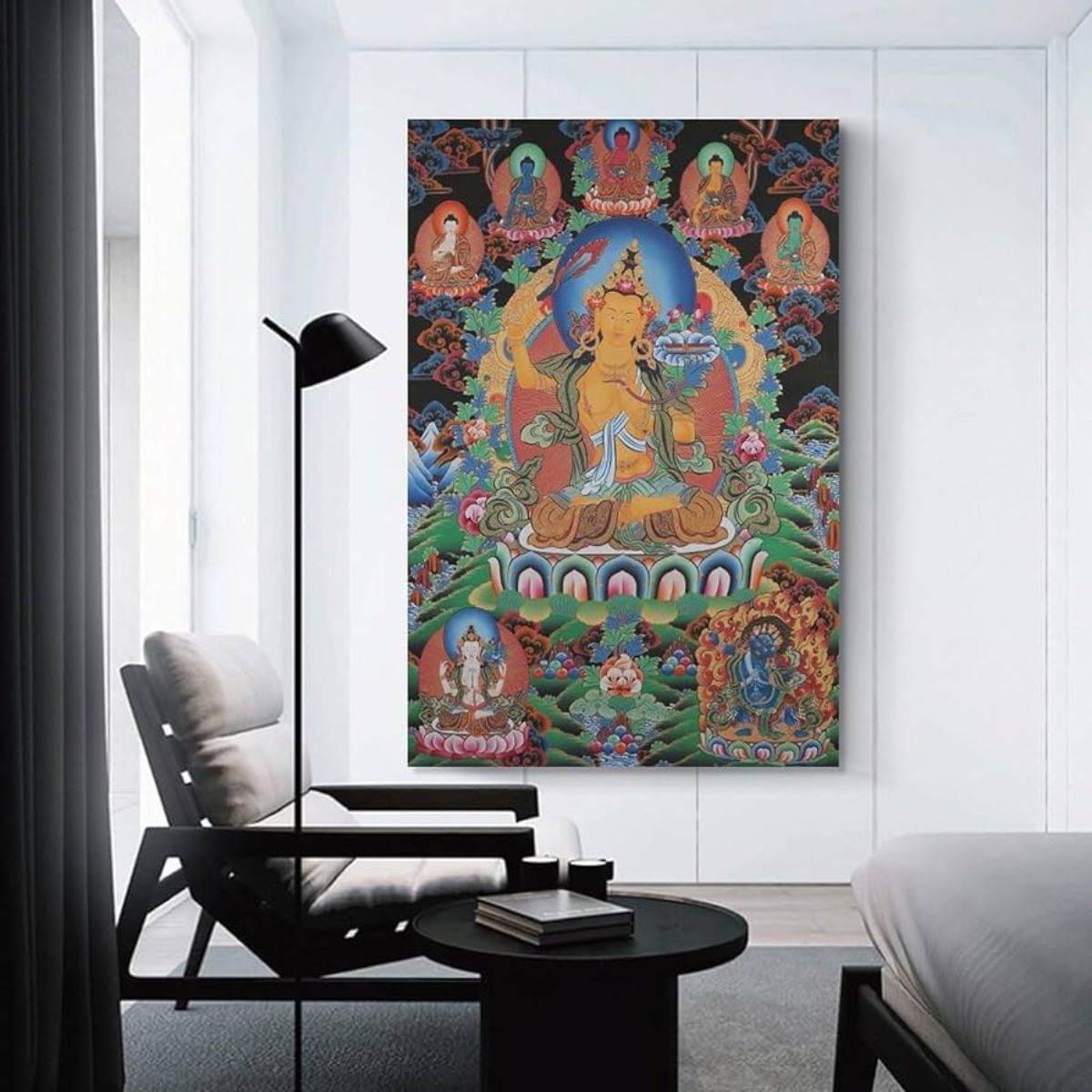
- Incorporating spiritual elements like Thangka paintings into your office decor can encourage mindfulness and promote a sense of well-being among employees and clients. Encourage moments of reflection and meditation in designated areas where the Thangka is displayed, fostering a harmonious balance between work responsibilities and personal growth. By creating intentional spaces for mindfulness practices, employees can recharge and rejuvenate their minds, enhancing their ability to navigate challenges with clarity and resilience.
- Moreover, the presence of spiritual artifacts like Thangka paintings serves as a gentle reminder of the interconnectedness of mind, body, and spirit in fostering holistic well-being within the workplace community. As individuals engage with the Thangka's imagery and symbolism, they may find themselves drawn into moments of contemplation and self-discovery, deepening their sense of purpose and fulfillment in both professional and personal spheres.
Embracing Thangka in the Office:
- Alongside Thangka paintings depicting Buddhist deities, it's common for individuals to incorporate representations of Zambala, the Buddhist deity of wealth and prosperity, into their office decor. Zambala is revered for his ability to bestow abundance and financial blessings upon devotees. Placing a depiction of Zambala in prominent office areas, such as reception desks or wealth corners identified in Feng Shui principles, is believed to attract auspicious energies and opportunities for prosperity.
- By integrating Zambala into the office environment, individuals not only seek material abundance but also cultivate a mindset of abundance and generosity, aligning their professional pursuits with spiritual values of integrity and compassion. Furthermore, the presence of Zambala serves as a source of inspiration and motivation for employees, reminding them to approach their work with diligence, gratitude, and a spirit of abundance.
-
Green Tara, known for her compassion and protection, is a beloved figure in Tibetan Buddhism. Consider hanging her Thangka in a place where you seek solace and guidance. This could be near your meditation area or in a quiet corner where you can reflect on her benevolent presence during moments of contemplation.
-
Chenrezig, the embodiment of compassion, is another popular subject depicted in Thangka paintings. His serene countenance reminds us to cultivate kindness and empathy in our lives. Hang Chenrezig's Thangka in a central location where its radiance can permeate the space, fostering an atmosphere of warmth and compassion for all who enter.
-
The Medicine Buddha Thangka represents healing and well-being, making it a fitting addition to spaces dedicated to health and wellness. Consider placing it in your bedroom or a healing room where its presence can inspire hope and promote physical and emotional healing.
Conclusion
By integrating symbols of abundance and prosperity like Zambala alongside Thangka paintings, individuals can cultivate an environment that not only fosters spiritual growth but also nurtures material well-being and success in their professional endeavors. As with any spiritual element, it's important to approach the inclusion of Zambala with reverence and mindful consideration of diverse beliefs and practices among colleagues and stakeholders.
In conclusion, the placement of a Thangka painting in both home and office settings requires thoughtful consideration of space, direction, and cultural sensitivity. Whether adorning your living room walls or enhancing the ambiance of your workplace, the presence of a Thangka painting can serve as a source of inspiration, spiritual reflection, and artistic appreciation. By honoring its sacred symbolism and embracing diversity in beliefs, you can create environments that resonate with harmony, mindfulness, and cultural respect.
